SUMMARY CMI
TRIDOPA™
Consumer Medicine Information (CMI) summary
The full CMI on the next page has more details. If you are worried about using this medicine, speak to your doctor or pharmacist.
1. Why am I using TRIDOPA?
TRIDOPA contains the active ingredients levodopa, carbidopa and entacapone. TRIDOPA is used to treat the symptoms of Parkinson's disease.
For more information, see Section 1. Why am I using TRIDOPA? in the full CMI.
2. What should I know before I take TRIDOPA?
Do not take if you have ever had an allergic reaction to TRIDOPA or any of the ingredients listed at the end of the CMI.
Talk to your doctor if you have any other medical conditions, take any other medicines, or are pregnant or plan to become pregnant or are breastfeeding.
For more information, see Section 2. What should I know before I take TRIDOPA? in the full CMI.
3. What if I am taking other medicines?
Some medicines may interfere with TRIDOPA and affect how it works.
A list of these medicines is in Section 3. What if I am taking other medicines? in the full CMI.
4. How do I take TRIDOPA?
- People with moderate to severe Parkinson's disease usually take from 3 to 7 tablets of TRIDOPA each day.
- Take only one TRIDOPA tablet at each dose. Swallow the tablets whole with a full glass of water.
More instructions can be found in Section 4. How do I take TRIDOPA? in the full CMI.
5. What should I know while taking TRIDOPA?
| Things you should do |
|
| Things you should not do |
|
| Driving or using machines |
|
| Looking after your medicine |
|
For more information, see Section 5. What should I know while taking TRIDOPA? in the full CMI.
6. Are there any side effects?
Some of the most common side effects of TRIDOPA are nausea, vomiting, diarrhoea, stomach pains, constipation, dizziness or light-headedness, extreme sleepiness and sudden onset of sleep and unusual and uncontrollable twitching, jerking or writhing movements, muscle and/or joint pain.
Serious side effects may include feeling depressed, compulsive behaviours, confusion, paranoia, chest pain/tightness, shortness of breath or difficulty breathing and fast or irregular heartbeats.
For more information, including what to do if you have any side effects, see Section 6. Are there any side effects? in the full CMI.
FULL CMI
TRIDOPA™
Active ingredient(s): levodopa/carbidopa/entacapone
Consumer Medicine Information (CMI)
This leaflet provides important information about using TRIDOPA. You should also speak to your doctor or pharmacist if you would like further information or if you have any concerns or questions about using TRIDOPA.
Where to find information in this leaflet:
1. Why am I using TRIDOPA?
2. What should I know before I take TRIDOPA?
3. What if I am taking other medicines?
4. How do I take TRIDOPA?
5. What should I know while taking TRIDOPA?
6. Are there any side effects?
7. Product details
1. Why am I using TRIDOPA?
TRIDOPA contains three active ingredients: levodopa, carbidopa and entacapone. TRIDOPA is an anti-Parkinson medicine containing dopaminergic agents that work together to raise the dopamine levels in the brain.
TRIDOPA is used to treat the symptoms of Parkinson's disease, such as shaking of the limbs, stiffness and slowness of movement, which make it difficult to perform normal daily activities.
Parkinson's disease is a disorder of the nervous system. It is caused by a lack of dopamine, a natural substance that is produced in the brain.
2. What should I know before I take TRIDOPA?
Warnings
Do not use TRIDOPA if:
- you are allergic to levodopa, carbidopa, entacapone, or any of the ingredients listed at the end of this leaflet. Always check the ingredients to make sure you can use this medicine.
- you have liver problems
- you have narrow-angle glaucoma
- you have a rare tumour of the adrenal gland, which sits near the kidney (called phaeochromocytoma)
- you have ever had a reaction to some medicines with a sudden increase in body temperature, extremely high blood pressure and severe convulsion (called neuroleptic malignant syndrome)
- you have ever had temporary paralysis or weakness of muscles (called rhabdomyolysis)
- you have unusual skin lumps or moles which have not been examined by your doctor, or if you have ever had skin cancer or melanoma.
Check with your doctor if:
You have or have had, any of the following medical conditions:
- depression, mental disturbances or you recognise anti-social behaviour
- heart disease, including irregular heartbeats
- kidney problems
- lung problems including asthma
- hormonal problems
- convulsions or fits
- a type of glaucoma called wide-angle glaucoma
- stomach ulcers
- problems with your gall bladder
- inflammatory bowel disease
- trehalase insufficiency.
During treatment, you may be at risk of developing certain side effects. It is important you understand these risks and how to monitor for them. See additional information under Section 6. Are there any side effects?
Pregnancy and breastfeeding
Do not take TRIDOPA if you are pregnant. Tell your doctor immediately if you become pregnant. There is not enough information to recommend using TRIDOPA during pregnancy.
Do not take TRIDOPA if you are breastfeeding. It is not known if the active ingredients in TRIDOPA passes into breast milk and could affect your baby. Talk to your doctor if you are breastfeeding or intend to breastfeed.
Use in children
TRIDOPA should not be used in children under the age of 18 years. The safety of TRIDOPA and how well it works has not be studied in children younger than 18 years of age.
3. What if I am taking other medicines?
Tell your doctor or pharmacist if you are taking any other medicines, including any medicines, vitamins or supplements that you buy without a prescription from your pharmacy, supermarket or health food shop.
Some medicines may interfere with TRIDOPA and affect how well each works. These include:
- phenelzine and tranylcypromine, medicines called monoamine oxidase inhibitor (MAOI) used to treat depression. TRIDOPA and MAOIs must not be taken together.
- some antibiotics such as erythromycin, rifampicin, ampicillin and chloramphenicol
- apomorphine, a medicine used in Parkinson's Disease
- adrenaline, a medicine used in some local anaesthetics and in emergency treatment of allergic reactions
- cholestyramine, a medicine used to reduce high levels of cholesterol in the blood
- papaverine, a medicine used to expand blood vessels to treat men with erectile dysfunction
- probenecid, a medicine used to prevent gout
- some medicines used to treat high blood pressure
- other medicines for Parkinson's disease
- some medicines for depression
- some medicines for psychiatric disorders
- methyldopa, a medicine for high blood pressure
- isoniazid, a medicine used to treat tuberculosis
- some medicines for nausea and vomiting
- phenytoin, a medicine used to treat convulsions
- medicines containing iron, such as iron tablets or multiple vitamins
- warfarin, a medicine used to prevent blood clots
Check with your doctor or pharmacist if you are not sure about what medicines, vitamins or supplements you are taking and if these affect TRIDOPA.
4. How do I take TRIDOPA?
How much to take
- People with moderate to severe Parkinson's disease usually take from 3 to 7 tablets of TRIDOPA each day.
- The maximum dose of TRIDOPA 50/12.5/200 mg, 75/18.75/200 mg, 100/25/200 mg, 125/31.25/200 mg and 150/37.5/200 mg is 10 tablets each day.
- The maximum dose of TRIDOPA 200/50/200 mg is 7 tablets each day.
- Take only one TRIDOPA tablet at each dose.
- Swallow the tablet whole with a full glass of water. Do not break the tablet into halves.
- Follow the instructions provided and keep taking TRIDOPA until your doctor tells you to stop.
When to take TRIDOPA
- It does not matter if you take TRIDOPA with or without food but avoid a high protein meal.
- If your stomach is upset after taking the tablet, take it with a meal or after a snack.
- If you are taking any medicines containing iron, take them at least 2 to 3 hours before or after a dose of TRIDOPA.
If you forget to take TRIDOPA
TRIDOPA should be used regularly at the same times each day. If you miss your dose at the usual time, you should take it as soon as you noticed that you have forgotten to take your medicine.
If it is almost time for your next dose, skip the dose you missed and take your next dose when you are meant to.
Do not take a double dose to make up for the dose you missed.
If you take too much TRIDOPA
If you think that you have taken too much TRIDOPA, you may need urgent medical attention.
You should immediately:
- phone the Poisons Information Centre
(by calling 13 11 26), or - contact your doctor, or
- go to the Emergency Department at your nearest hospital.
You should do this even if there are no signs of discomfort or poisoning.
5. What should I know while taking TRIDOPA?
Things you should do
- Visit your doctor regularly so they can check on your progress. Your doctor may also carry out tests to check your blood, liver, heart and kidney functions.
- If your symptoms appear to worsen, tell your doctor.
- If you plan to have surgery, including dental surgery, tell your doctor or dentist that you are taking TRIDOPA.
- Remind any doctor, dentist or pharmacist you visit that you are using TRIDOPA.
Things you should not do
- Do not stop taking this medicine or change the dose unless your doctor tells you to.
Dietary considerations
Be careful not to eat a high protein diet. If you are unsure, ask your doctor, pharmacist or dietician to check your diet.
Behavioural changes
Tell your doctor if you or your family/care giver notices you are developing:
- addiction-like symptoms leading to craving for larger doses of TRIDOPA and other medicines used to treat Parkinson's disease (known as dopamine dysregulation syndrome).
- urges or craving to behave in ways that are unusual for your or you cannot resist the impulse, drive or temptation to carry out certain activities that could harm yourself or others. These behaviours are called impulse control disorders and can include addictive gambling, excessive eating or spending, an abnormally high sex drive or a preoccupation with an increase in sexual thoughts or feelings. Your doctor may need to review your treatments.
Driving or using machines
Be careful before you drive or use any machines or tools until you know how TRIDOPA affects you.
TRIDOPA may cause drowsiness, dizziness or lightheadedness. It can cause extreme sleepiness and sudden onset of sleep in the middle of daytime activities, sometimes without warning.
Looking after your medicine
- Store below 25°C.
Follow the instructions in the carton on how to take care of your medicine properly.
Store it in a cool dry place away from moisture, heat or sunlight; for example, do not store it:
- in the bathroom or near a sink, or
- in the car or on window sills.
Keep it where young children cannot reach it.
Getting rid of any unwanted medicine
If you no longer need to use this medicine or it is out of date, take it to any pharmacy for safe disposal.
Do not use this medicine after the expiry date.
6. Are there any side effects?
All medicines can have side effects. If you do experience any side effects, most of them are minor and temporary. However, some side effects may need medical attention.
See the information below and, if you need to, ask your doctor or pharmacist if you have any further questions about side effects.
Less serious side effects
| Less serious side effects | What to do |
Stomach, bowel or urinary related:
| Speak to your doctor if you have any of these less serious side effects and they worry you. |
Serious side effects
| Serious side effects | What to do |
Heart or blood pressure related
| Call your doctor straight away, or go straight to the Emergency Department at your nearest hospital if you notice any of these serious side effects. |
Tell your doctor or pharmacist if you notice anything else that may be making you feel unwell.
Other side effects not listed here may occur in some people.
Reporting side effects
After you have received medical advice for any side effects you experience, you can report side effects to the Therapeutic Goods Administration online at www.tga.gov.au/reporting-problems. By reporting side effects, you can help provide more information on the safety of this medicine.
Always make sure you speak to your doctor or pharmacist before you decide to stop taking any of your medicines.
7. Product details
This medicine is only available with a doctor's prescription.
What TRIDOPA contains
| Active ingredients (main ingredients) | levodopa, carbidopa, entacapone |
| Other ingredients (inactive ingredients) | Croscarmellose sodium, hyprolose, trehalose dihydrate, powdered cellulose, sodium sulphate, microcrystalline cellulose, magnesium stearate, Opadry II complete film coating 85G35208 RED (ARTG 108033) |
Do not take this medicine if you are allergic to any of these ingredients.
What TRIDOPA looks like
TRIDOPA comes in 6 strengths of tablets:
- TRIDOPA 50/12.5/200 mg – oval biconvex red tablet marked “50” on one side and “LEC” on the other side. (AUST R 195188)
- TRIDOPA 75/18.75/200 mg – oval biconvex red tablet marked “75” on one side and “LEC” on the other side. (AUST R 195184)
- TRIDOPA 100/25/200 mg – oval biconvex red tablet marked “100” on one side and “LEC” on the other side. (AUST R 195187)
- TRIDOPA 125/31.25/200 mg – oval biconvex red tablet marked “125” on one side and “LEC” on the other side. (AUST R 195185)
- TRIDOPA 150/37.5/200 mg – oval biconvex red tablet marked “150” on one side and “LEC” on the other side. (AUST R 195197)
- TRIDOPA 200/50/200 mg – oval biconvex red tablet marked “200” on one side and “LEC” on the other side. (AUST R 195190)
Each pack contains 100 tablets. Not all strengths may be available.
Who distributes TRIDOPA
Stada Pharmaceuticals Australia Pty Ltd
Level 3, Suite 204, 26 Rodborough Road
Frenchs Forest NSW 2086
This leaflet was prepared in June 2021.
Published by MIMS August 2021

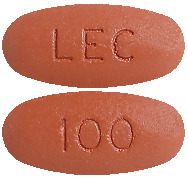
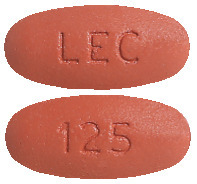
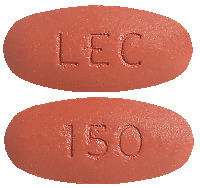
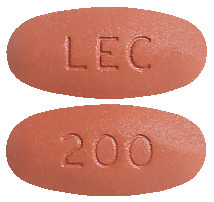
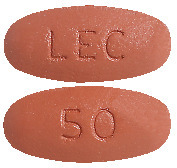
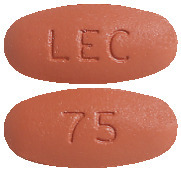
 Entacapone enhances the effects of levodopa. It may therefore be necessary, particularly in patients with dyskinesia, to reduce levodopa dosage by 10-30% within the first days to first weeks after initiating Tridopa treatment. The daily dose of levodopa can be reduced by extending the dosing intervals and/or by reducing the amount of levodopa per dose, according to the clinical condition of the patient.
Entacapone enhances the effects of levodopa. It may therefore be necessary, particularly in patients with dyskinesia, to reduce levodopa dosage by 10-30% within the first days to first weeks after initiating Tridopa treatment. The daily dose of levodopa can be reduced by extending the dosing intervals and/or by reducing the amount of levodopa per dose, according to the clinical condition of the patient. Some of the adverse reactions, such as dyskinesia, nausea, and abdominal pain, may be more common with higher doses of entacapone (1,400 to 2,000 mg per day) than with lower doses of entacapone.
Some of the adverse reactions, such as dyskinesia, nausea, and abdominal pain, may be more common with higher doses of entacapone (1,400 to 2,000 mg per day) than with lower doses of entacapone. Levodopa is bound to plasma protein only to a minor extent of about 10-30%.
Levodopa is bound to plasma protein only to a minor extent of about 10-30%.


